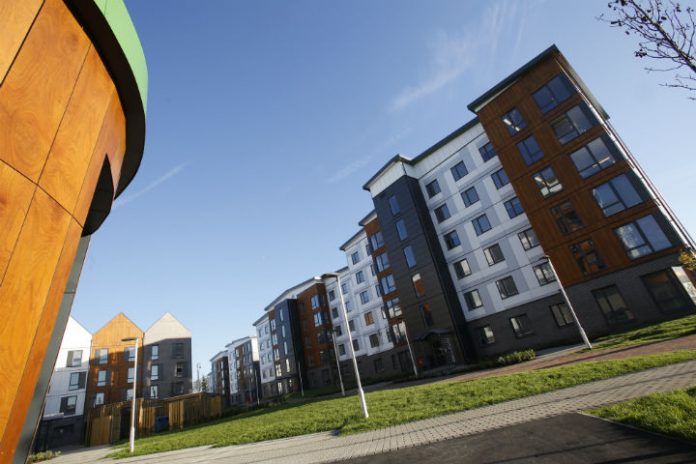The quality of a university’s facilities influences my choice of institution, say a majority of students. But Andrew May warns that capital funding cuts are leaving universities with hard choices about their future investments in estates.
The size of the university sector is not something that everybody readily grasps. With turnover of £27.3bn this would put it in fourth place in the FTSE 350 top revenues – against Tesco £63bn, Vodafone £38.3bn, SSE £30.6bn and ahead of Sainsbury’s £23.9bn.
With a total floor area for its buildings of 26 million m2 this makes it seven times bigger than Tesco and only slightly smaller than the NHS (30 million m2).
According to the annual report prepared by the Association University Director of Estates (AUDE), using data from the Higher Education Statistics Agency (HESA), capital expenditure in estates, excluding residential, was £2.0bn in 2012/13, a rise of 9% – this is greater than the expenditure on Crossrail (total budget £14.8bn over nine years). The revenue costs of supporting the university estate is £1.9bn per annum.
Student expectations
These costs pose the following questions. With tuition fees rising, student expectations increasing and even greater competition, is this capital spend set to continue? With revenue budgets decreasing as a result of government cuts can this be sustained? More importantly, are these figures masking a problem?
The capital and maintenance spend as a percentage of income has seen a reduction, dropping from over 16% in 2004/05 to below 12% in 2011/12, albeit it has recovered to 14% in 2012/13. Capital and maintenance spend as a percentage of Insurance, Replacement Value (IRV) has also been declining over the past ten years, this is despite substantially increasing capital expenditure over the same period.
It has been suggested that 4.5% of IRV represents the level of expenditure that institutions should be making to ensure their estate remains in good condition. This level has not been achieved for some years and would require capital expenditure of £2.7bn per annum an increase of 35% on the current figure.
Risks
Underinvestment in the physical estate is a key risk for any institution. With downward pressure on revenue spend the easy decision is to reduce maintenance spend. However, a year or two of under investment will begin to see liabilities increase. Condition and suitability will decline, backlog maintenance will grow, utilities costs increase and total property costs will materially enhance. Very soon the estate will not be fit for purpose and will certainly not offer a 21st century student experience.
In a recent AUDE survey of 2,000 students, more than three quarters said that the facilities on offer at a university played a role in the final choice. Cuts from capital funding are in danger of putting this at risk.
Declining budgets potentially means even greater pressure on maintenance spend – with student expectations rising and competition growing, universities have to think long and hard about all key strategic decisions – if they wish to continue to invest in excellence they have to think carefully about their capital and maintenance budgets and perhaps even increase them for their long term future.
Andrew May is director of estates, hospitality and contract services at the University Of Hertfordshire and is AUDE’s east Midlands representative.








